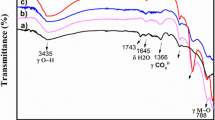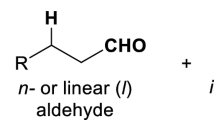Abstract
In this work, comparative testing of the activity of low-percentage palladium and palladium-nickel catalysts supported on activated diatomite with a commercial nickel catalyst from BASF was carried out in the process of hydrogenation of polyalphaolefins (PAO-4). It has been found that palladium catalysts carry out the process under milder conditions, demonstrate higher activity compared to nickel catalysts, significantly reduce the process time, and provide a higher degree of hydrogenation. The activity of bimetallic catalysts is lower than that of monometallic palladium catalysts. Furthermore, Ni exhibits a reaction temperature of at least 150 °C, while Pd is at least 110 °C. If nickel is a single-use catalyst, then when palladium is used 5 times remains an excellent catalytic activity. Catalyst activity is related to the form of adsorbed hydrogen, and on Pd catalyst hydrogen is weakly bound form, while on Ni hydrogen is strongly bound form. The physicochemical characteristics of catalysts and polyalphaolefin oils also have been determined.










Similar content being viewed by others
Data Availability
The authors declare that the data and materials are available.
References
Rudnik LR (2006) Synthetics, mineral oils, and bio-based lubricants: chemistry and technology. Taylor and Francis, Milton park
Mang T, Dresel W (2007) Lubricants and lubrication. Wiley
Samaheh S, Naeimeh B, Mehdi N, Farshid Z, Sedva D, Sedigheh S, Ameneh R, Mehdi S, Seyed A (2019) Int J Polym Anal Charact 24:556–570
Yang N, Nandapurkar PJ (2009) Low viscosity polyalphaolefins based on 1-decene and 1-dodecane. US Patent 7592497
Ray S, Rao PV, Choudary NV (2012) Lubr Sci 24:23–44
Sun H, Shen B, Wu D, Guo X, Li D (2016) J Catal 339:84–92
Olejniczak A, Kucinska A, Cyganiuk AW, Lukaszewicz JP (2012) Ind Eng Chem Res 51:5117–5123
Bazanov TA, Petrov LV, Psikha BL, Psikha SB, Kharitonov VV (2008) Pet Chem 48:296–301
Williamson JB, Lewis SE, Johnson RR, Manning IM, Leibfarth FA (2019) Chem Int Ed 58:8654–8668
Guseinova GA, Samedova FI, Shabalina TN (2010) Chem Technol Fuels Oils 46:25–30
Savchenko VI, Aldoshin SM (2010) Pet Chem 50:255–265
Sadjadi S, Koohestani F, Pareras G, Nekoomanesh-Haghighi M, Bahri-Laleh N, Poater A (2021) J Mol Liq 331:115740
Nifantev IE, Vinogradov AA, Vinogradov AA, Sedov IV, Dorokhov VG, Lyadov AS, Ivchenko PV (2018) Appl Catal A 549:40–50
De Rogatis L, Cargnello M, Gombac V, Lorenzut B, Montini T, Fornasiero P (2010) Chem Sus Chem 3:24–42
Campbell CT, Sellers JR (2013) Faraday Discuss 162:9–30
Alijani H, Beyki MH, Shariatinia Z, Bayat M, Shemirani F (2014) Chem Eng J 253:456–463
Gregg SJ, Sing KSW (1982) Adsorption, surface area and porosity, 2nd edn. Academic Press, London
Barrett EP, Joyner LG, Halenda PP (1951) J Am Chem Soc 73:373–380
ISO 3839:1996/AMD 1:2020 Petroleum products - determination of bromine number of distillates and aliphatic olefins - Electrometric method - Amendment 1 https://www.iso.org/standard/77907.html
ASTM D445:2021 Standard test method for kinematic viscosity of transparent and opaque liquids (and calculation of dynamic viscosity)
ASTM D2270-10:2016 Standard practice for calculating viscosity index from kinematic viscosity at 40 °C and 100 °C. 3934067
ASTM D5949-16:2016 Standard test method for pour point of petroleum products (Automatic Pressure Pulsing Method)
Toshtay K, Auyezov AB, Bizhanov ZA, Yeraliyeva A, Toktasinov S, Kudaibergen B, Nurakyshev A (2015) Eurasian Chem Technol J 17:33–39
Toshtay K, Auezov AB (2020) Catal Ind 12:7–15
Şan O, Goren R, Ozgür C (2009) Int J Miner Process 93:6–10
Kruk M, Jaroniec M (2001) Chem Mater 13:3169–3183
Martin RW, Deckman DE, Kelly KJ, Emett CJ, Hagemeister MP, Harrington BA, Lin CY, Matsunaga PT, Ruff CJ, Stavens KB (2016) U.S. Patent US9234150:2016
Bariås OA, Holmen A, Blekkan EA (1996) J Catal 158:1–12
Miller JT, Meyers BL, Modica FS, Lane GS, Vaarkamp M, Koningsberger DC (1993) J Catal 143:395–408
Mihet M, Lazar MD (2018) Catal Today 306:294–299
Shin EW, Cho SI, Kang JH, Kim WJ, Park JD, Moon SH (2000) Korean J Chem Eng 17:468–472
El Gamal IM, Gobiel S (1996) J Appl Polym Sci 61:1265–1272
Acknowledgements
The authors would like to thank the Ministry of Science and Higher Education of the Republic of Kazakhstan (Grant No. AP14871087) for providing financial support.
Author information
Authors and Affiliations
Contributions
KT: Data curation, Conceptualization, Supervision, Writing—original draft, Writing—review & editing. AA: Writing—review & editing. YA: Experimental data. RA: Writing paper. SA: Experimental analysis. YS: Experimental tool. UN: Experimental tool.
Corresponding authors
Ethics declarations
Conflict of interest
The authors declare no conflicts of interest.
Ethical Approval
We declare that all authors approved their participation to the current research work.
Consent for Publication
The authors give the publisher the permission of the authors to publish the work.
Additional information
Publisher's Note
Springer Nature remains neutral with regard to jurisdictional claims in published maps and institutional affiliations.
Rights and permissions
Springer Nature or its licensor (e.g. a society or other partner) holds exclusive rights to this article under a publishing agreement with the author(s) or other rightsholder(s); author self-archiving of the accepted manuscript version of this article is solely governed by the terms of such publishing agreement and applicable law.
About this article
Cite this article
Toshtay, K., Auyezov, A., Aubakirov, Y. et al. Palladium–Nickel Supported and Palladated Activated Diatomite as an Efficient Catalyst for Poly-α-olefins Hydrogenation. Catal Surv Asia 27, 296–305 (2023). https://doi.org/10.1007/s10563-023-09394-y
Received:
Accepted:
Published:
Issue Date:
DOI: https://doi.org/10.1007/s10563-023-09394-y




